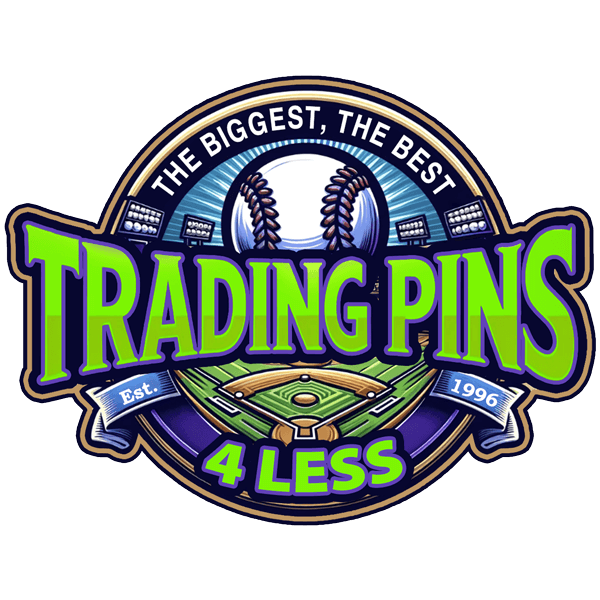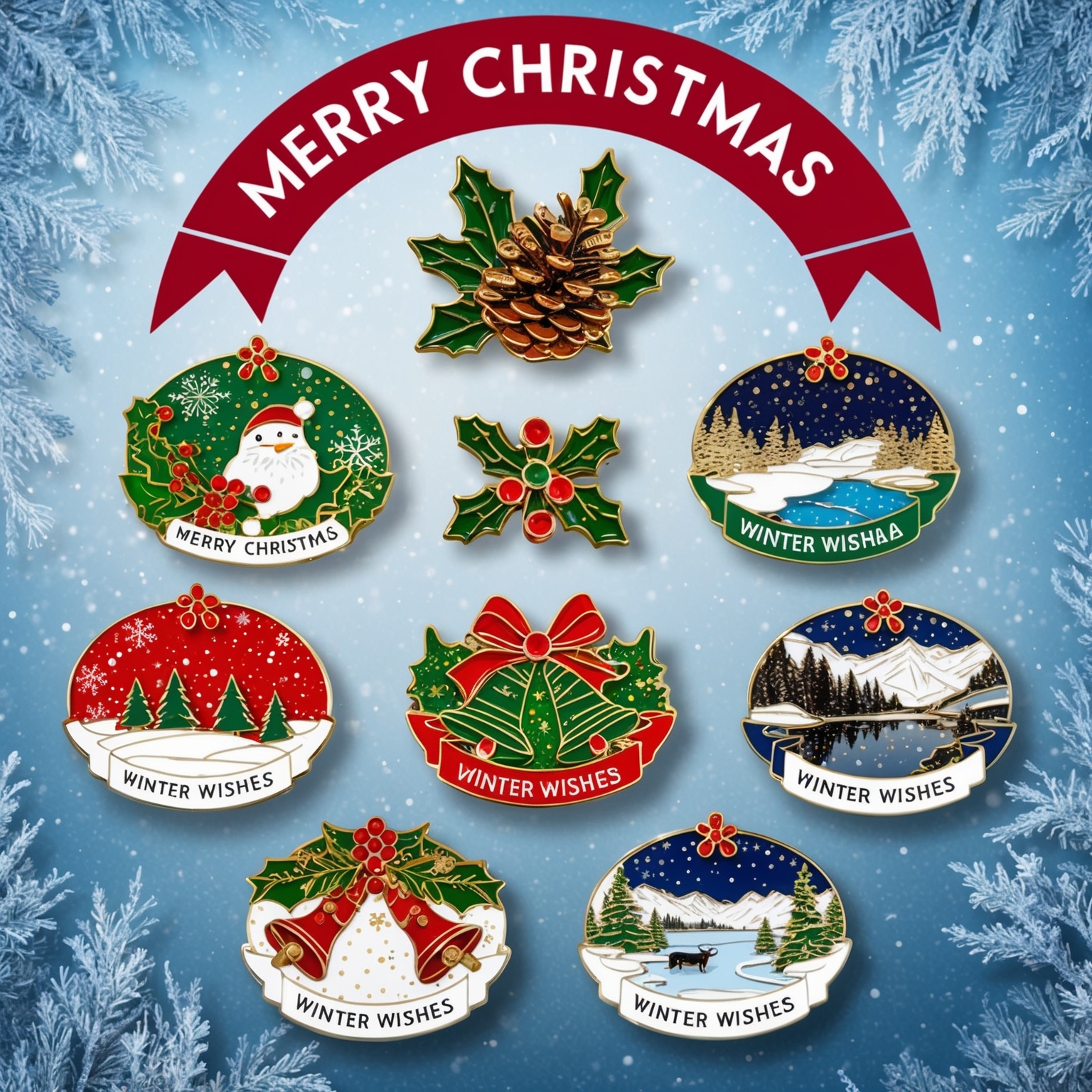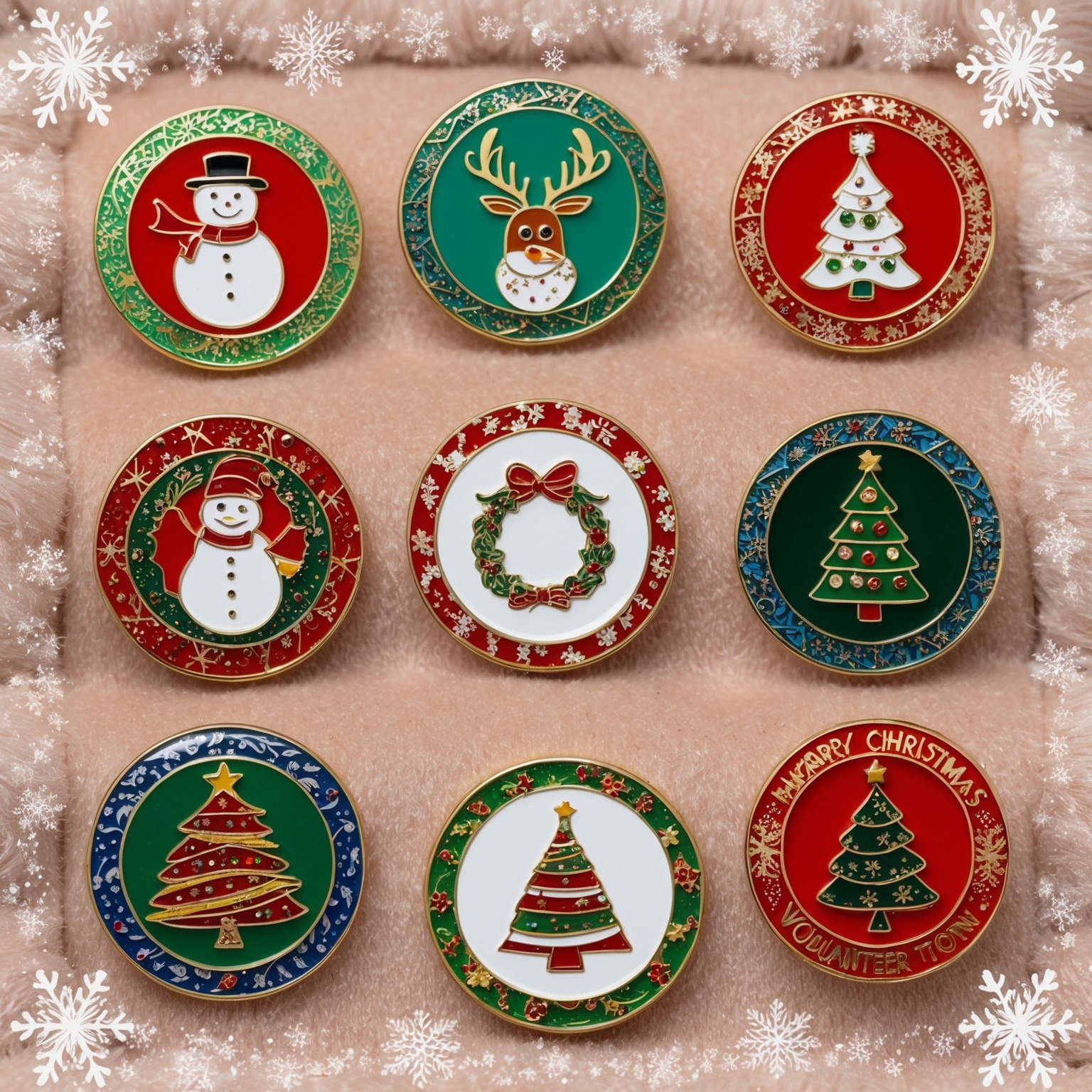Trading pins are cherished collectibles that come in various themes and styles, reflecting a wide array of interests and cultures. For collectors, building a diverse trading pin portfolio is both an art and a passion, offering a way to express their personalities, commemorate experiences, and connect with others. Whether you are a seasoned collector or just starting, understanding the different themes and styles available can help you curate a collection that is both meaningful and aesthetically pleasing. This comprehensive guide will explore the essential aspects of crafting a diverse trading pin portfolio, focusing on the various themes, styles, and strategies that can enhance your collection.
A trading pin portfolio is more than just a collection of pins; it is a personal narrative that reflects the collector’s interests, experiences, and artistic tastes. Each pin tells a story, whether it’s tied to a favorite sports team, a beloved movie, a memorable event, or a cultural tradition. As collectors seek to build a diverse portfolio, they often explore a wide range of themes and styles, creating a collection that is as unique as they are.
The diversity of trading pins available today is staggering, with designs ranging from classic and vintage to modern and avant-garde. This diversity allows collectors to explore different aspects of culture, art, and history, making pin collecting a rich and rewarding hobby. A well-curated trading pin portfolio not only showcases a collector’s interests but also serves as a tangible representation of their journey through various fandoms and experiences.
In this guide, we will delve into the key themes and styles that can make a trading pin portfolio truly diverse and captivating. We will explore popular categories such as sports, entertainment, pop culture, and custom designs, as well as unique styles that can add depth and character to a collection. Additionally, we will offer tips and strategies for building and curating a trading pin portfolio that is both aesthetically pleasing and personally meaningful.
1. Exploring Themes in Trading Pin Portfolios
Themes are a central element in crafting a trading pin portfolio, as they provide a unifying concept that ties the collection together. Collectors often choose themes based on their personal interests, hobbies, or cultural affiliations. Here, we explore some of the most popular and intriguing themes in trading pin portfolios.
Sports and Athletics
Sports-themed trading pins are a staple in many collections, offering a way to celebrate team spirit, athletic achievements, and iconic sports moments. These pins often feature team logos, mascots, player portraits, and symbols of specific sports, such as baseballs, footballs, or hockey sticks.
Collectors can focus on pins from major sports leagues, such as the NFL, NBA, MLB, or NHL, or explore international sports like soccer, rugby, or cricket. Pins commemorating significant events, such as the Olympics, World Series, or Super Bowl, are also highly collectible. For those with a more niche interest, pins from amateur and youth sports tournaments can add a unique touch to the portfolio.
Entertainment and Pop Culture
The world of entertainment and pop culture offers a treasure trove of trading pins, appealing to fans of movies, TV shows, music, and video games. Collectors can find pins featuring iconic characters, memorable quotes, and famous scenes from beloved franchises. Disney pins, for example, are a popular subcategory, with designs showcasing classic characters, park attractions, and special events.
Music-themed pins celebrate bands, artists, and music festivals, while comic and animation pins feature superheroes, villains, and animated characters. Video game pins, representing popular titles and gaming icons, have also become a significant part of pop culture collections. Collectors can curate a portfolio that spans various genres and eras, reflecting their diverse tastes in entertainment.
Historical and Cultural
Historical and cultural themes add depth and significance to a trading pin portfolio. These pins often commemorate important historical events, figures, and cultural traditions. For example, collectors can find pins celebrating national holidays, cultural festivals, and historical milestones, such as Independence Day, Lunar New Year, or significant anniversaries.
Cultural and regional pins may feature symbols, landmarks, or traditional art from specific countries or regions. These pins offer a glimpse into the diversity of global cultures and can serve as a way to honor one’s heritage or explore different parts of the world. Pins from historical events, such as political campaigns, space missions, or significant anniversaries, provide a tangible connection to history.
Fantasy and Mythology
Fantasy and mythology themes allow collectors to explore the realms of imagination and legend. These pins often feature mythical creatures, legendary heroes, and fantastical landscapes. Collectors can find pins inspired by classic myths, folklore, and fantasy literature, such as Greek mythology, Arthurian legends, or Tolkien’s Middle-earth.
Fantasy-themed pins may also include elements from role-playing games, fantasy movies, and books. Whether it’s a dragon, a wizard, or a magical artifact, these pins bring the world of fantasy to life and add a touch of magic to any portfolio.
Custom and Artistic
Custom and artistic trading pins offer a unique opportunity for collectors to showcase their creativity and individuality. Custom pins can be commissioned for specific events, organizations, or personal milestones, featuring unique designs that are meaningful to the collector. These pins often incorporate logos, mascots, or personalized elements that reflect the collector’s interests.
Artistic pins, on the other hand, focus on aesthetics and artistic expression. These pins may feature abstract designs, artistic interpretations, or collaborations with well-known artists. Collectors who appreciate art and design may enjoy curating a portfolio that showcases a variety of artistic styles and techniques.
2. Diverse Styles in Trading Pin Portfolios
In addition to themes, the style of trading pins is an important consideration for collectors. The style of a pin refers to its design, materials, and production techniques. By exploring different styles, collectors can add variety and visual interest to their portfolio.
Enamel Pins
Enamel pins are one of the most popular styles in trading pin collections. They are known for their vibrant colors, smooth finish, and durability. Enamel pins come in two main types: soft enamel and hard enamel.
- Soft Enamel Pins: These pins have recessed areas filled with enamel paint, giving them a textured feel. They are often used for more detailed designs and can include multiple colors and intricate patterns.
- Hard Enamel Pins: Also known as cloisonné pins, hard enamel pins have a smooth, polished finish. The enamel is filled to the level of the metal lines, creating a flat surface. Hard enamel pins are known for their high-quality finish and are often used for elegant and classic designs.
Die-Cast and Die-Struck Pins
Die-cast and die-struck pins are made using a mold or die, creating a raised design on the metal surface. These pins often have a more three-dimensional look and feel, with detailed textures and reliefs.
- Die-Cast Pins: Die-cast pins are made by pouring molten metal into a mold. This process allows for complex shapes and detailed designs. They can be finished with various plating options, such as gold, silver, or antique finishes.
- Die-Struck Pins: Die-struck pins are created by striking a metal sheet with a die, imprinting the design onto the metal. These pins can be left as raw metal or filled with enamel for added color. Die-struck pins are often used for traditional and vintage designs.
Epoxy-Coated Pins
Epoxy-coated pins are covered with a clear epoxy dome, providing a protective layer over the design. This coating gives the pins a glossy finish and helps protect them from scratches and wear. Epoxy-coated pins can feature printed or enamel designs and are popular for their durability and versatility.
3D and Specialty Pins
3D and specialty pins add an extra dimension to trading pin collections. These pins often feature unique elements, such as moving parts, attachments, or special finishes.
- 3D Pins: These pins have a three-dimensional design, often created through sculpting or molding techniques. They can include raised elements, such as figures, logos, or symbols, that stand out from the base of the pin.
- Spinner and Slider Pins: Spinner and slider pins have movable parts that can be rotated or slid. These interactive elements add a playful aspect to the pins and can be used to reveal different images or messages.
- Glow-in-the-Dark and UV Pins: These pins are treated with special materials that glow in the dark or react to UV light. They are popular for their eye-catching effects and are often used in designs related to nighttime or space themes.
Vintage and Retro Pins
Vintage and retro pins have a nostalgic appeal and are often sought after by collectors who appreciate the history and craftsmanship of older pins. These pins can include designs from past decades, such as vintage sports team logos, classic advertising pins, or retro pop culture icons.
Vintage pins may show signs of wear or aging, adding to their charm and character. Collectors who enjoy hunting for rare and historical items may find vintage and retro pins a rewarding addition to their portfolio.
3. Building and Curating a Diverse Trading Pin Portfolio
Building a diverse trading pin portfolio involves careful selection, organization, and curation. Collectors should consider their personal interests, aesthetic preferences, and the overall theme of their collection. Here are some tips for building and curating a well-rounded trading pin portfolio.
Defining Your Collection’s Focus
The first step in building a trading pin portfolio is defining the focus of your collection. Consider what themes and styles resonate with you and what story you want your collection to tell. You may choose to focus on a specific theme, such as sports, entertainment, or cultural pins, or explore a wide range of themes for a more eclectic collection.
Once you’ve defined your focus, consider setting specific goals for your collection. For example, you may aim to collect pins from every major sports team, every Disney movie, or every country you’ve visited. Setting goals can help guide your collecting efforts and provide a sense of direction.
Sourcing and Acquiring Pins
Sourcing and acquiring pins is an exciting part of building a trading pin portfolio. There are several ways to find pins, including attending events, shopping online, and trading with other collectors.
- Events and Conventions: Pin trading events, conventions, and swap meets are great places to find a variety of pins and meet other collectors. These events often feature vendors, special guests, and exclusive pins, providing opportunities to expand your collection.
- Online Marketplaces: Online platforms like eBay, Etsy, and specialized pin trading websites offer a wide range of pins for collectors. When buying online, be sure to check the authenticity and condition of the pins and purchase from reputable sellers.
- Trading with Collectors: Trading with other collectors is a fun and social way to acquire new pins. Joining collector groups, forums, and social media communities can help you connect with other enthusiasts and find trading opportunities.
Organizing and Displaying Your Collection
Organizing and displaying your trading pin portfolio is an important aspect of curation. A well-organized collection is easier to manage and more enjoyable to view.
- Categorizing: Categorize your pins by theme, style, or another system that makes sense for your collection. This can help you keep track of your pins and identify gaps or areas for expansion.
- Storage: Proper storage is essential for preserving the condition of your pins. Use pin albums, display boards, or cases to store your pins safely. Protect them from dust, moisture, and sunlight, which can cause damage over time.
- Display: Displaying your pins can showcase your collection and allow you to enjoy it more fully. Consider using shadow boxes, frames, or pin boards to create visually appealing displays. You can arrange your pins by theme, color, or another creative layout.
Documenting and Cataloging
Documenting and cataloging your collection is a valuable practice that helps you keep track of your pins and their details. Consider creating a catalog that includes information about each pin, such as its origin, date of acquisition, and any special features.
- Photographs: Take photographs of your pins and include them in your catalog. This can help you identify pins and keep a visual record of your collection.
- Descriptions: Write descriptions for each pin, including its theme, style, and any relevant background information. This can add context and depth to your collection.
- Value and Rarity: Note the value and rarity of each pin, if known. This information can be useful for insurance purposes and for assessing the overall value of your collection.
4. Evolving and Expanding Your Trading Pin Portfolio
As your trading pin portfolio grows, you may find new interests and areas of exploration. The evolution and expansion of your collection can be a dynamic and exciting process.
Exploring New Themes and Styles
As you continue to collect, consider exploring new themes and styles that pique your interest. This can add diversity to your portfolio and keep your collecting experience fresh and engaging. For example, if you’ve primarily collected sports pins, you might explore pop culture or fantasy themes. Alternatively, you might delve into more niche areas, such as pins from specific events, historical pins, or custom designs.
Keeping Up with Trends
The world of trading pins is constantly evolving, with new designs, collaborations, and trends emerging regularly. Keeping up with trends can help you discover new pins and stay connected to the broader pin trading community.
Follow pin trading forums, social media groups, and newsletters to stay informed about new releases, upcoming events, and popular trends. Engaging with the community can also provide opportunities to learn about rare and limited-edition pins that may be of interest to you.
Engaging with the Community
Engaging with the pin trading community is a rewarding aspect of the hobby. Whether online or in person, connecting with other collectors can provide valuable insights, trading opportunities, and a sense of camaraderie.
Consider joining collector clubs, attending pin trading events, and participating in online discussions. Sharing your collection and experiences with others can enhance your enjoyment of the hobby and help you build lasting connections.
Reflecting on Your Collection
Periodically reflecting on your collection can help you assess its direction and make decisions about future acquisitions. Consider what you enjoy most about your collection and whether there are areas you’d like to explore further.
You may also choose to refine your collection by focusing on specific themes or styles and letting go of pins that no longer fit your interests. This process can help you create a more cohesive and meaningful portfolio.
Conclusion
Crafting a diverse trading pin portfolio is a creative and fulfilling endeavor that allows collectors to express their interests, explore different themes and styles, and connect with a broader community. From sports and entertainment to historical and custom pins, the possibilities for building a unique and captivating collection are endless.
A well-curated trading pin portfolio not only showcases a collector’s passions but also serves as a personal narrative, reflecting their journey through various fandoms and experiences. By exploring different themes and styles, sourcing pins from various channels, and engaging with the pin trading community, collectors can create a portfolio that is both diverse and meaningful.
As the world of trading pins continues to evolve, collectors have the opportunity to expand their horizons and discover new areas of interest. Whether you’re just starting your collection or are a seasoned enthusiast, the journey of building and curating a trading pin portfolio is a rewarding experience filled with creativity, discovery, and connection.
If you are interested in buying high quality custom trading pins, you can call us at 1-800-641-1299 or fill out a FREE quote form.







